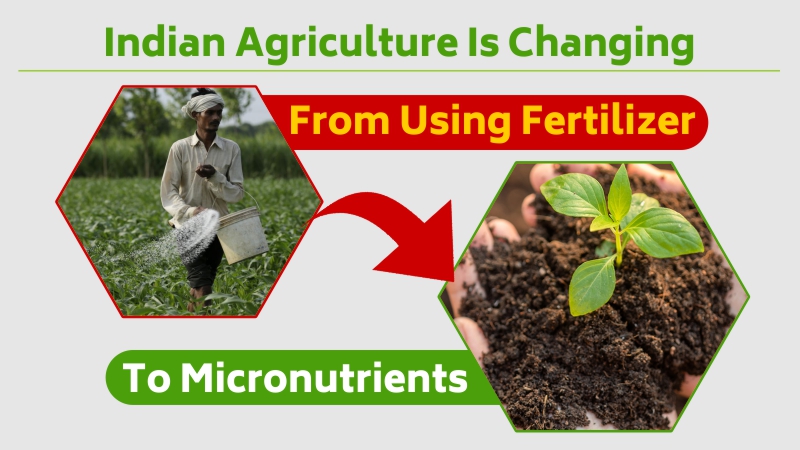Current cropping pattern with high-yielding harvest cultivars and uneven fertilizer application brought about rise of boundless micro-nutrient lack in soils and harvests of India prompting diminished crop yield and low micro-nutrient focus in horticultural produce. Throughout the long term, Zn lack has declined in soils of the country due to standard and more utilization of Zn compost though lack of Fe and Mn expanded somewhat. Likewise, multi-miniature and optional supplement inadequacies like S+Zn, Zn+B, S+B, Zn+Fe, S+Fe, Zn+Mn, Zn+Cu and Fe+B, S+Zn+B, S+Zn+Fe and Zn+Fe+B have arisen in various pieces of the country. Incorporation of micro-nutrients in adjusted preparation plan expanded inward use effectiveness of NPK. Subsequently, micronutrient the executives relying on crops, soil types, seriousness of lack, source, technique, time, rates and recurrence of utilization should be attempted for practical agrarian creation and support of human wellbeing.
Role of Micronutrients
Micronutrients assume significant part in Indian horticulture towards manageable yield creation. The significance of micronutrients should be seen in food frameworks setting, as their consideration in adjusted preparation timetable would improve micronutrient supply and accessibility in the whole food utilization cycle. Indian soils are for the most part poor in ripeness particularly in micronutrients as these have reliably been mined away from their limited soil source because of ceaseless development for quite a while without expansion of micronutrient manure bringing about arising micronutrient inadequacy.
High Use of Fertilizer during Green Revolution
Moreover, green revolution drove expanded request of micronutrients by the high yielding crop cultivars (particularly rice and wheat) as well as reception of concentrated editing rehearses, utilization of high-investigation composts with low micronutrient content, diminished utilization of natural excrements and harvest deposits, developing of yields in soils with low micronutrient holds and other regular and anthropogenic factors unfavorably influencing phyto-accessibility of micronutrients irritated the circumstance
Micronutrient Deficiencies in Crops
In dislike of the moderately high all out contents of micronutrients detailed in soils of India, micronutrient inadequacies have been frequently reported on many yields developed from various parts of the country because of low accessible degrees of these nutrients. The nature and degree of inadequacies vary with soil type, crop geno-type, the board and agro-environmental circumstances. With the escalated trimming of high yielding assortments of rice and wheat, inadequacy of Zn at first, and hence lacks of Fe in rice, and Mn in wheat, arose as the dangers to sustenance of elevated degrees of harvest creation. Micronutrient deficiencies are presently as often as possible noticed in intensively developed grain, oil-seed, pulses and vegetable crops. Availability can be characterized as the amount of a soil nutrient that is open to establish roots during the period of developing season. Since plant root accumulate micronutrients straightforwardly from the soil solution, the absolute pool of soil micronutrients is not directly accessible. In light of as far as possible followed in various states; inadequacy status of micronutrients has been surveyed in various soils.
Factors That Influence the Accessibility of Micronutrients in Indian Soil
- Soil pH
- Soil temperature
- Low soil natural matter
- Escalated farming practices
- Imbalanced utilization of composts
Factors That Influence the Inappropriate Utilization of Micronutrients
Poor Awareness and Communication
The essential justification behind low micronutrient take-up is the absence of information among farmers about the nourishing status of their territory and the supplements expected for crop development. Indeed, even farmers who know about these healthful holes accept that essential supplements are adequate for crop development. This conviction is powered by insufficient admittance to trusted and pertinent data on the utilization of compost supplements.
Low Utilization of Soil Health Card
The Government of India (GoI) executed the Soil Health Card (SHC) program in 2015 to increment mindfulness among farmers in regards to the nourishing status of their property and give suggestions on manure use. Nonetheless, consistence with these suggestions has up to this point been low. This rebelliousness can be credited to the hard to-comprehend configuration of the suggestions and an absence of trust among farmers that impedes them from changing their ongoing manure use designs because of dread of yield misfortunes.
Absence of Soil Testing Facilities
As of now, India has 1,454 soil testing labs, just 700 of which are furnished with micronutrient testing offices. These labs likewise miss the mark on talented HR and utilitarian gear expected for testing. This is deficient, considering the around 140 million farmers spread across India. Subsequently, these farmers are compelled to venture out significant distances to get to the labs and stand by three to four months to get results.
Strategy Holes by the GOI and the Absence of State Government Drives
The ongoing supplement endowment design of the public authority vigorously finances essential manure supplements like nitrogen as urea. This boosts farmers to utilize these composts and restricts the take-up of micronutrient manures. A couple of states including Kerala, Karnataka, and Andhra Pradesh have given micronutrient endowments, which are restricted to explicit yields or geologies. Additionally, micronutrients draw in a higher Goods and Services Tax (GST) and customs obligation on import, when contrasted with essential supplement composts.
Indian soils are for the most part poor in fruitfulness, especially in micronutrients as these have reliably been mined from the limited soil assets for an extremely long-lasting without outside expansion of these supplements through particular manure sources. Recognizable proof of explicit micronutrient-insufficient or potentially poisonous are to shreds significant soil types for various trimming systems and planning of the point by point geo-referenced digitized maps is supportive in exact micro-nutrient fertilizer applications to accomplish higher sustainable agricultural efficiency, dietary quality, and better soil and human well-being.
Download KhetiGuru mobile application for more details about, micronutrients. Also visit khetigaadi.com for details about tractors, implements, harvesters and other agriculture tools.




